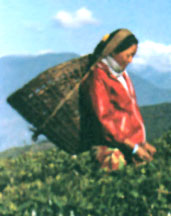Artisan wants to keep alive art of Sikkim’s Lepcha tribe
 Gangtok, Oct. 31 : Woven with bamboo, Sumuk Thyaptuk or the Lepcha hat, creates a fabulous piece of art that is laced with history and a deep cultural heritage associated with the indigenous Lepcha tribe.
Gangtok, Oct. 31 : Woven with bamboo, Sumuk Thyaptuk or the Lepcha hat, creates a fabulous piece of art that is laced with history and a deep cultural heritage associated with the indigenous Lepcha tribe.
An artisan Tengay Lepcha is using his expertise to keep this traditional art form alive.
Only a few like Tengay have been able to master the art of weaving the Lepcha hat, which requires both hard work and patience.
The hat is adorned with a peacock feather and a replica of the Nambong Ong, a Sikkimese male bird known for its leadership qualities. It is held by a stick with a symbol of the sun and the moon, which bestows a sense of authority to the one wearing the hat.
It is worn by all Lepcha males and the Boomthing or the Lepcha high priest during religious gatherings and festivals.
“I am trying my best to preserve this art which I learnt from my guru. This is an effort to save the old tradition of making a Lepcha hat. I want to keep the art of making the hat alive so that it does not die out,” said Tengay Lepcha.
To add beauty to the hat, a granite stone is also placed that shines on a sunny day. It is held up by a local Totala flower, a medicinal plant and used with Kawai leaves to protect it from rain.
It is mainly woven out of ‘Payoung’ or ‘Gopey’ bamboo sliced into fine strings to weave the design.
The hat comes in single and double size, and usually takes a month and half to make.
Working with the Directorate of Handloom and Handicraft in North Sikkim, Tengay Lepcha teaches Lepcha youth.
”I sell a single design cap for Rs. 3000 to 3500 and the double cap for Rs. 5000, as it takes lot of hard work and takes many days to complete. I tell my village people that we should learn our art and as long as I am alive I will try and teach the art form so that Lepcha art survives with the passage of time,” said Tengay Lepcha.
The modern day Lepcha hat is made of pre-dyed bamboo with added colours like maroon and green.
Tengay''s effort is indeed praiseworthy. (ANI)